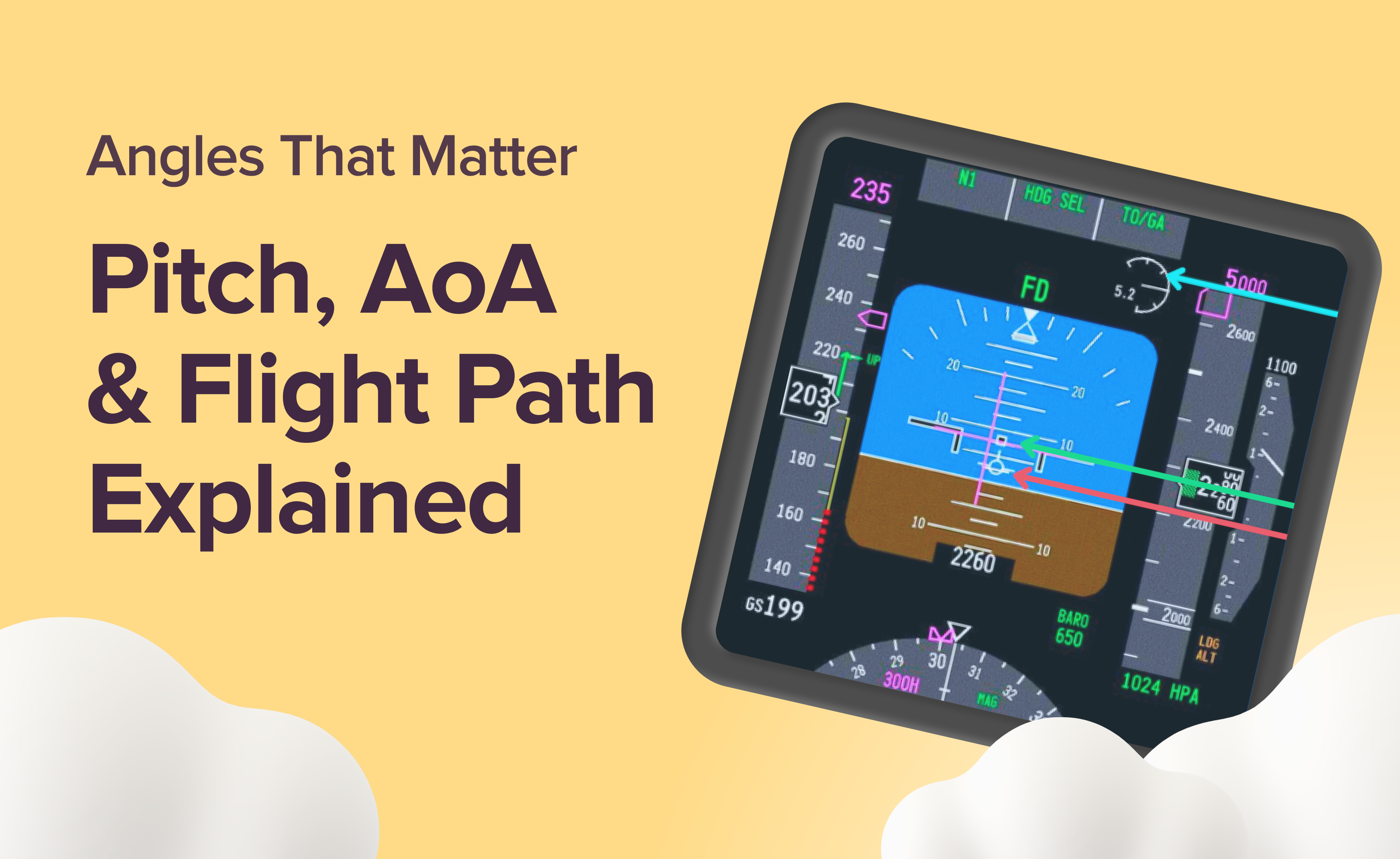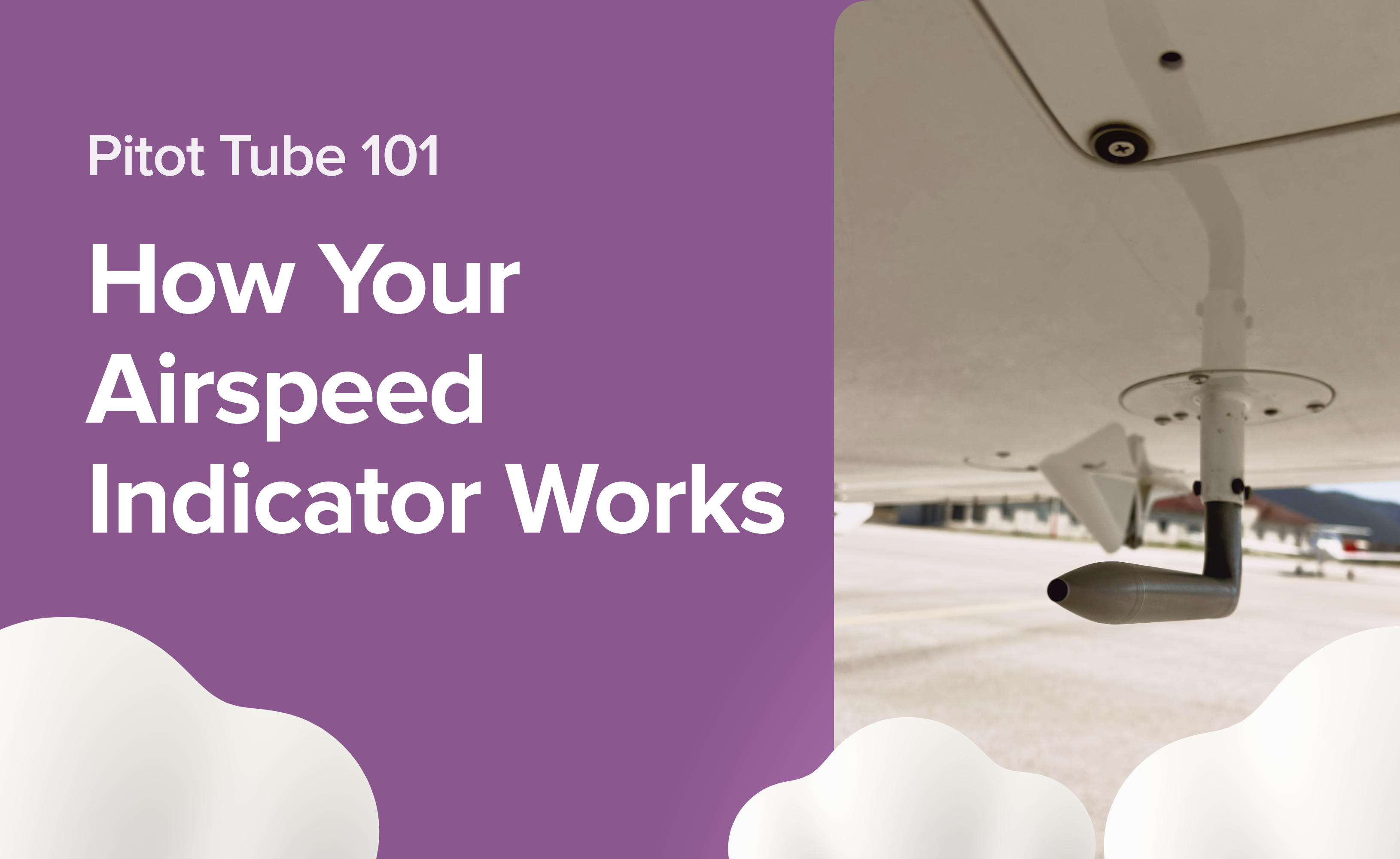Holding Patterns: Mastering the Aerial Roundabout

“Hold at waypoint X, maintain FL90, expect further clearance in 15 minutes.”
To a student pilot, those words can spark a moment of mild panic. Suddenly, you’re no longer flying straight toward your destination — you’re in a racetrack in the sky, watching the clock, the needles, and your fuel.
These prescribed procedures keep traffic orderly and safe, especially during delays, weather diversions, or airspace congestion. In this post, we’ll break down what holding patterns are, how to enter and fly them with precision, and how the classic “5 Ts” keep everything running smoothly. If you're training toward your PPL or ATPL, this is one lesson that will absolutely hold value — pun intended.
Keep the ATPL exams from becoming your aviation Everest. Unlock the secrets to success with these proven student strategies and question bank tips.
What Is a Holding Pattern?

A holding pattern is a racetrack-shaped manoeuvre that keeps an aircraft in a defined area of airspace, usually near a navigational fix, while awaiting further clearance from Air Traffic Control (ATC). It’s used to manage traffic flow, handle delays, and give ATC time to sequence arrivals — especially in busy or weather-affected airspace.
Think of it as an aerial roundabout. Instead of circling the block on the ground, you’re looping in the sky — precisely, calmly, and with purpose.If multiple aircraft are stacked in the same hold, ATC assigns 1,000 feet of vertical separation between them. As aircraft exit, the next one descends to fill the gap — like an orderly aerial lift.
Understand the basic traffic pattern from every stage to smooth, safe flying. Read more in: In the Loop: How to Fly the Basic Traffic Pattern.
Anatomy of a Holding Pattern
A standard holding pattern consists of:
The Fix: The navigation point where the hold begins — this could be a VOR, NDB, or GPS waypoint.
Inbound Leg: The straight segment flown toward the fix.
Outbound Leg: The straight segment flown away from the fix.
Turns: Two 180° standard-rate turns connecting the legs, always to the right in a standard hold (left if specified otherwise).
Timing in a holding pattern is crucial; it begins precisely abeam the fix—when you're directly beside it, not just crossing it.
At or below 14,000 feet: each leg is flown for 1 minute.
Above 14,000 feet: each leg is 1.5 minutes.
This is the core structure that every holding pattern follows. Once you understand this shape and rhythm, the rest becomes a matter of timing, anticipation, and airmanship.
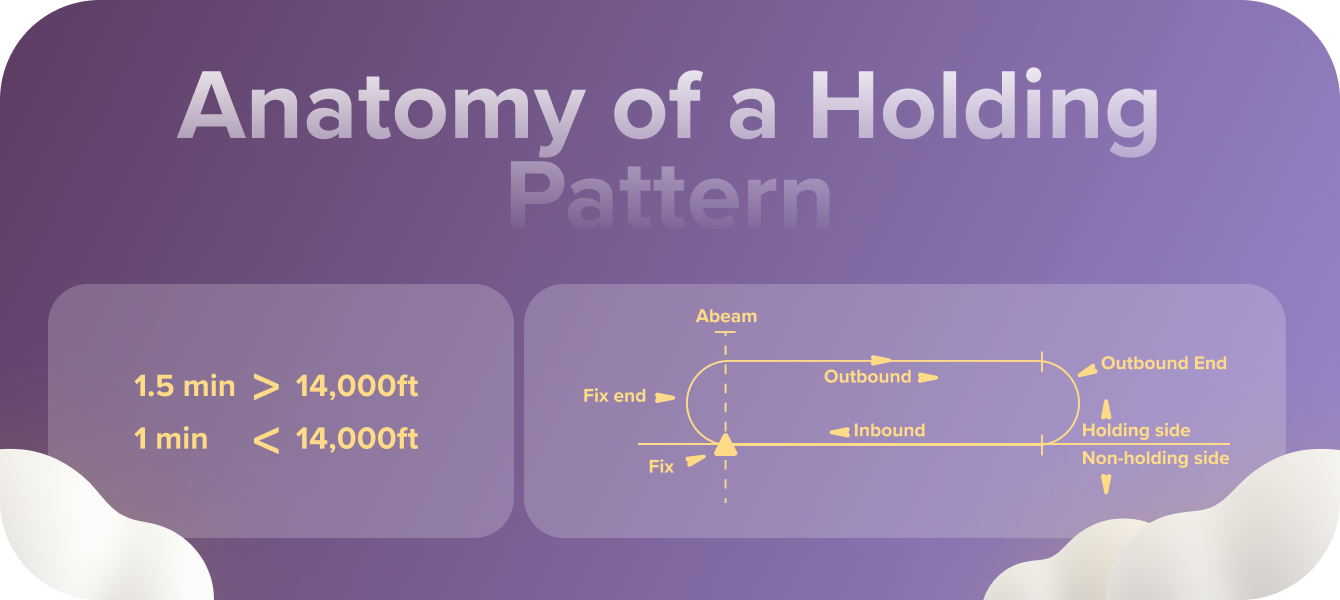
Standard vs. Non-Standard Hold
Not all holding patterns are alike. Some involve right turns, while others use left turns. The direction of your turns dictates whether you're flying a standard or non-standard holding pattern, and knowing which one Air Traffic Control (ATC) expects is critical.
The Standard Holding Pattern is the default. You'll always fly this pattern unless ATC instructs you otherwise. It features a constant rightward turn and 1-minute time legs when flying below Flight Level (FL) 140, or 1.5-minute legs when flying above FL140.
A Non-Standard Holding Pattern involves left-hand turns. These patterns may also incorporate custom leg times or specific speed adjustments, often due to airspace constraints or the need for efficient traffic management. They can also include published procedures unique to particular fixes or approaches.
Fly safely across Europe. Our guide, See and Be Seen: Rules for Safe VFR Flying, breaks down the essential VFR rules you must know for confident piloting
5 Points to Note When ATC Issues a Hold
Whenever you’re instructed to enter a holding pattern, especially an unpublished one, make sure you write down these five essentials:
1. Holding fix — Where to begin the hold
2. Inbound course — The direction you'll fly toward the fix
3. Turn direction — Right or left
4. Leg time or distance — Usually 1 min or specified in nautical miles
5. Expect Further Clearance (EFC) time — When you’ll hear from ATC again
If the hold is charted (on a STAR or approach plate), ATC will typically say: “Hold as published” — meaning everything you need is already on your chart.
Learn why stalls occur and how to recover smoothly in our blog: Stalls Explained: The Basics of Lift Loss in Flight.
Three Types of Holding Entries
Direct, Parallel, or Offset? Let the angle decide.
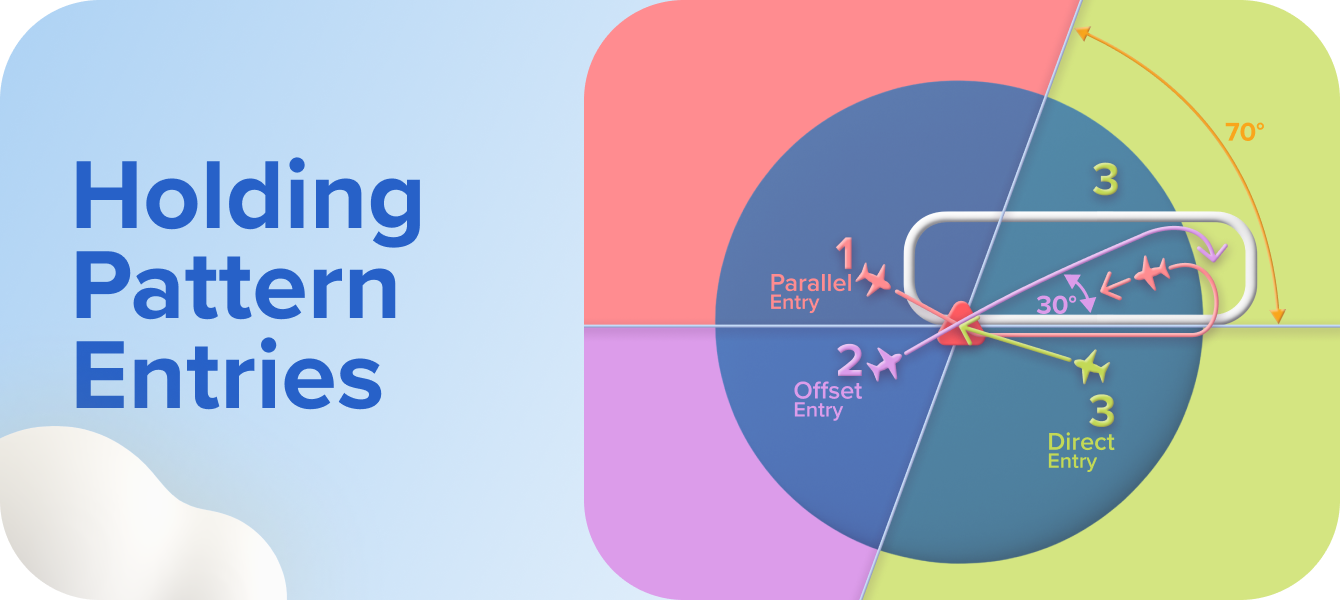
Once you receive holding instructions, how you enter the pattern depends on your inbound heading to the fix relative to the holding course. This determines the safest, most efficient way to transition into the hold — and it all comes down to angles.
The standard holding pattern is conceptually divided into three sectors, each corresponding to an entry type:
The parallel sector spans 110 degrees.
The offset sector covers 70 degrees.
The direct entry sector occupies the remaining 180 degrees.
Note: If an aircraft's approach falls within 10 degrees of the boundary between two sectors, it is considered to be in a buffer zone. In such instances, pilots have the flexibility to choose the entry method deemed most convenient or safest for their current situation.
Recommendations vs. Regulations: There's no specific rule that forces pilots to use these exact entry procedures. Air Traffic Control (ATC) also typically doesn't tell pilots which entry method to use. In real-world flying, particularly under pressure, many pilots default to the direct entry when time is short. However, you should know and practice all three to stay sharp and pass checkrides. Flight examiners always test pilots on their ability to perform the correct holding entry.
Direct Entry
Most common and intuitive, the easiest one
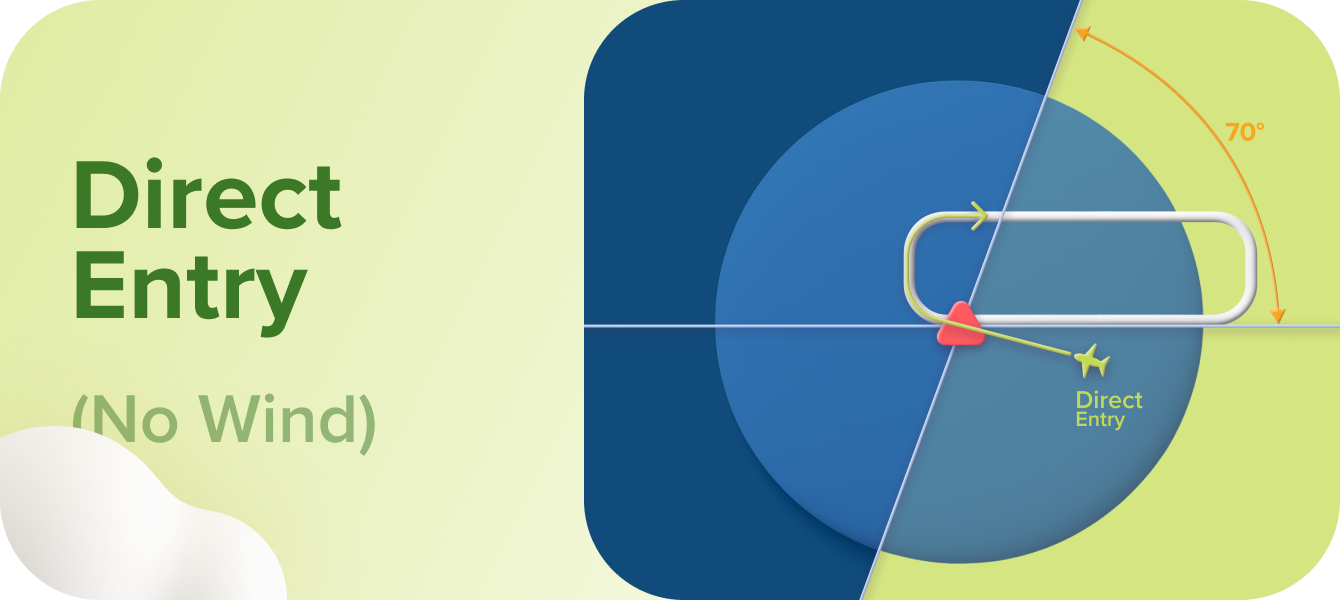
When to use it: Your inbound heading is within 70° of the outbound leg. What to do: Fly directly over the fix, turn in the direction of the hold, and begin the outbound leg.
Parallel Entry
When You’re Aligned but Opposite
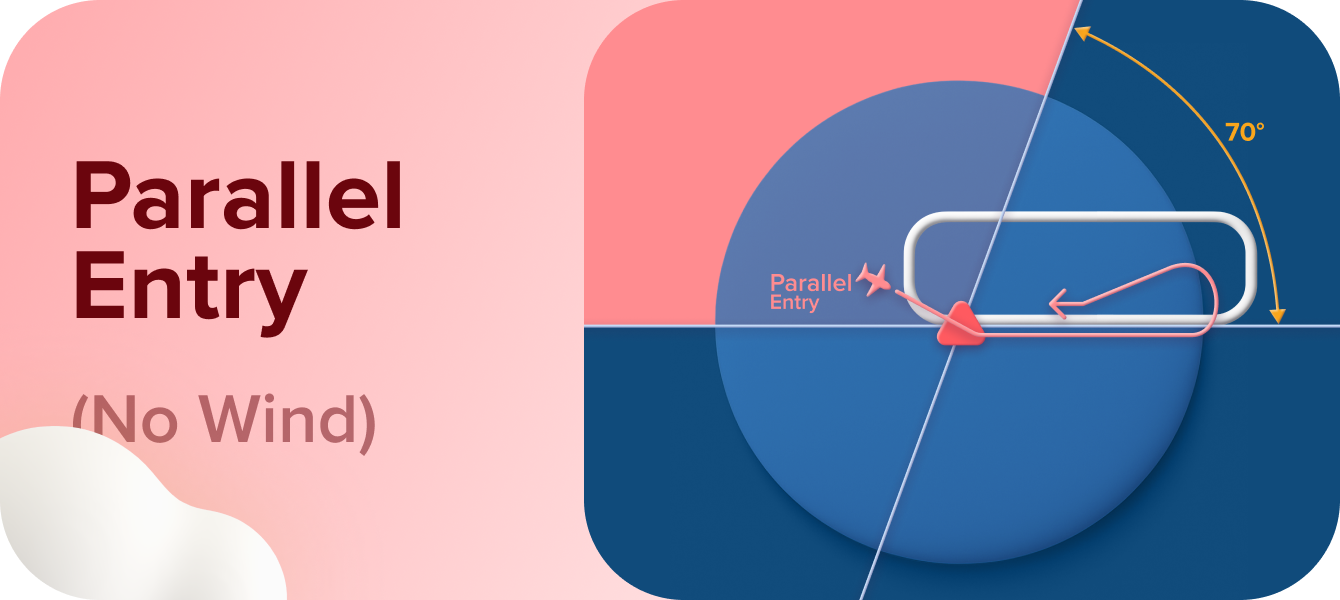
When to use it: Your inbound heading is within the 110° sector opposite the hold direction. What to do: Cross the fix, fly parallel to the inbound course but opposite direction. Turn back toward the holding side after 1 minute. Re-intercept the inbound leg. Takes a little longer, but keeps you close to the fix.
Offset Entry
Also Called Teardrop Entry
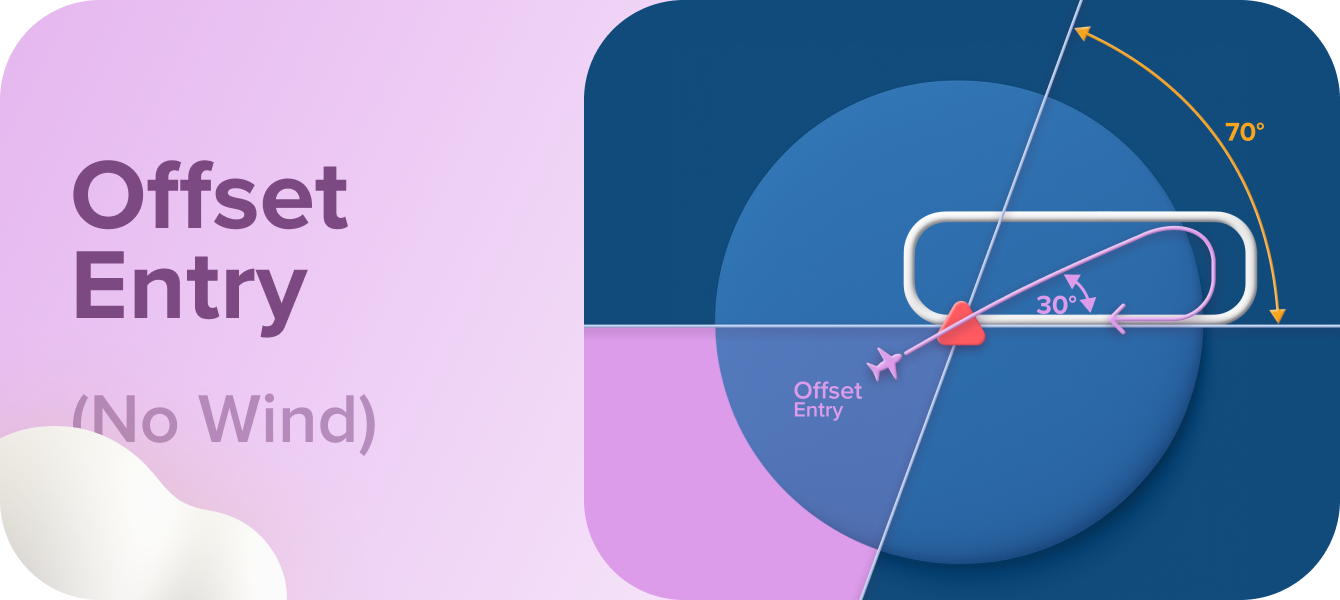
When to use it: You're in the remaining 70° wedge between parallel and direct. What to do: Cross the fix and turn 30° off the outbound leg toward the holding side. After one minute, turn in the holding direction to intercept the inbound leg. Best used when neither direct nor parallel entries are safe or efficient.
Facing obstacles in your flight training? Training Challenges: 12 Reasons Why Student Pilots Quit offers insights and solutions to help you persevere.
The Five “T”s of Holding Procedure
Turn. Time. Twist. Throttle. Talk.
Now let’s jump into the practical side of actually flying a holding pattern with a simple and effective memory aid. These 5 Ts serves as an easy-to-follow checklist when you're crossing a holding fix. It keeps your scan organized and your cockpit workload under control — especially helpful during IFR flight or flight training exams. Let’s break them down:
1. Turn
Turn the aircraft to the appropriate heading for your chosen entry procedure (direct, parallel, or offset). This gets you aligned with the holding pattern.
2. Time
Start your timer as soon as you cross the fix or become abeam the fix (depending on your entry). This helps you track leg lengths — 1 minute for holds below FL140, 1.5 minutes above.
3. Twist
Twist your OBS (Omni Bearing Selector) to the inbound course. This aligns your navigation instruments with the holding leg, so you stay on track and don’t lose situational awareness.
4. Throttle
Adjust your power settings and mixture to maintain holding speed (e.g., 170 knots max for propeller aircraft in published holds, or 230–265 knots for jets depending on altitude). Maintain consistent performance.
5. Talk
Report to ATC as needed — typically when established in the hold, or if required, advise them of your altitude and time crossing the fix. Let them know you're ready for further clearance when applicable.

Smarter flying starts here. Explore 8 Rules of Thumb for more intuitive and efficient flying.
How to Nail the Holding Pattern
Holding patterns can feel like juggling with one hand tied behind your back — turn, time, navigate, communicate… and somehow stay on altitude too. Let’s make it easier by highlighting the most common student pilot slip-ups and how to avoid them.
Overbanking on Turns
In a rush to stay tight in the racetrack, some students bank too steeply — sometimes 30° or more.
Standard rate turns (about 3° per second) are usually achieved with a bank angle of around 15° at holding speeds (roughly 150 KIAS). Steeper banks don’t help much and can lead to altitude deviations or spatial disorientation. Keep it smooth.
Forgetting to Start the Timer on the Inbound Leg
Timing is critical, but it’s easy to forget when you’re busy thinking about navigation or comms.
As soon as you roll wings level on the inbound leg, start the timer. Make it a habit. Set a reminder in your “Five T’s” checklist.
Not Correcting for Wind
Wind is the silent sculptor of messy holds. If you don’t correct, you’ll either overshoot or undershoot the fix — and your pattern will drift. A well-flown holding pattern is symmetrical.
Use the “double the inbound correction on the outbound” rule, then refine it every circuit. So, if you’re crabbing 5° right inbound, try 10° left on the outbound. It’s not perfect, but it’s a solid starting point — refine it each circuit. Small changes = big improvements.
Chasing Perfection on the First Circuit
Reality check: Your first lap might be messy. That’s OK. Holding is all about adjusting. Use your first circuit to observe wind effects, refine timing, and improve. That’s airmanship in action.

Airhead's Takeaway
Holding patterns may not be the flashiest manoeuvre in your flight training, but they are one of the most revealing. They showcase your ability to stay composed, fly precisely, and think ahead — especially under pressure. And that’s what makes it such a valuable part of becoming a skilled, safe aviator. Trust your instruments, fly the pattern, and own the hold.






